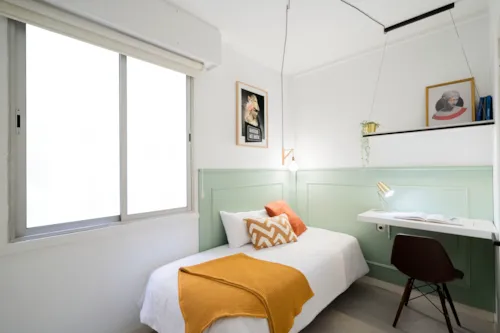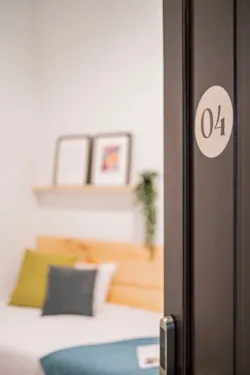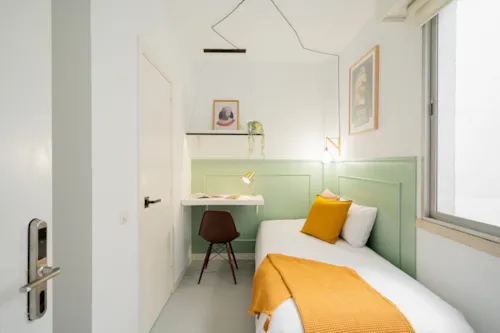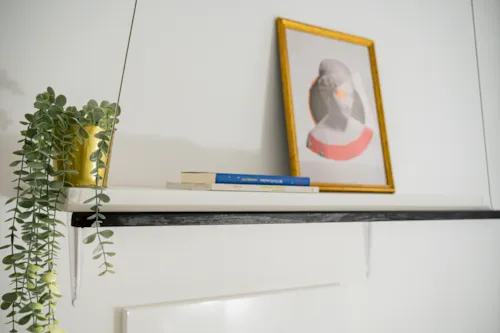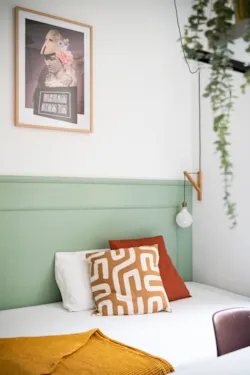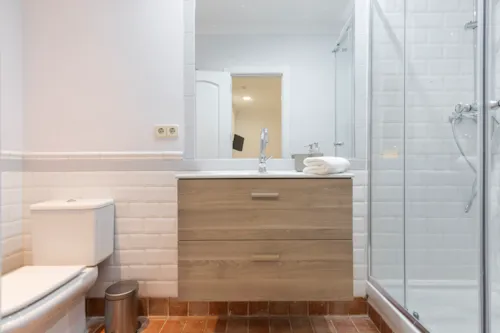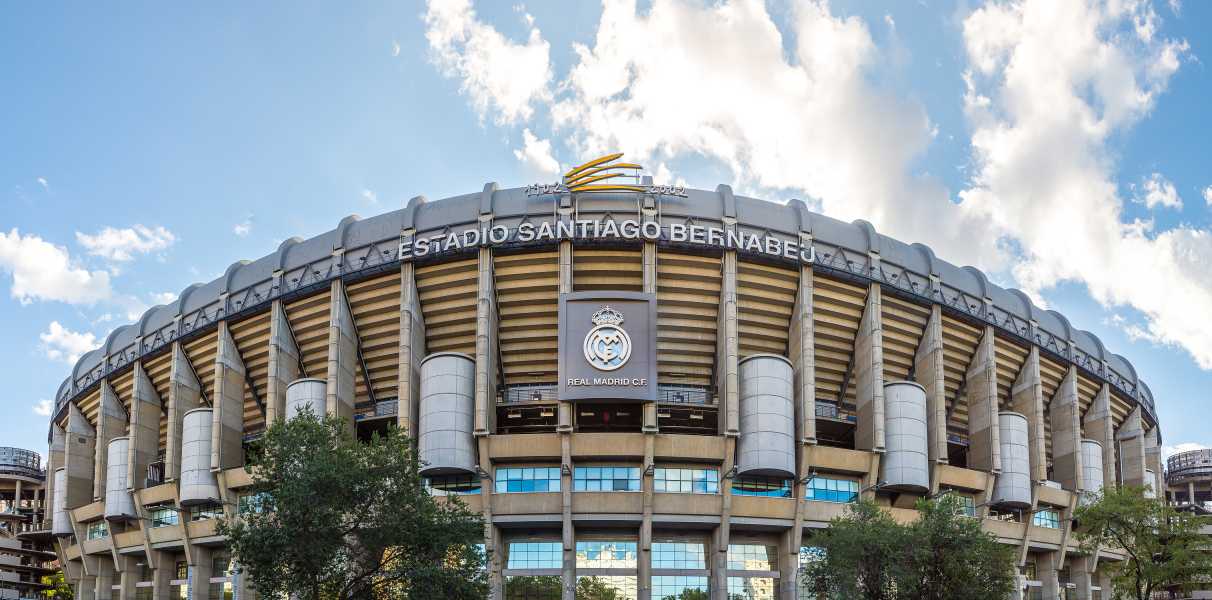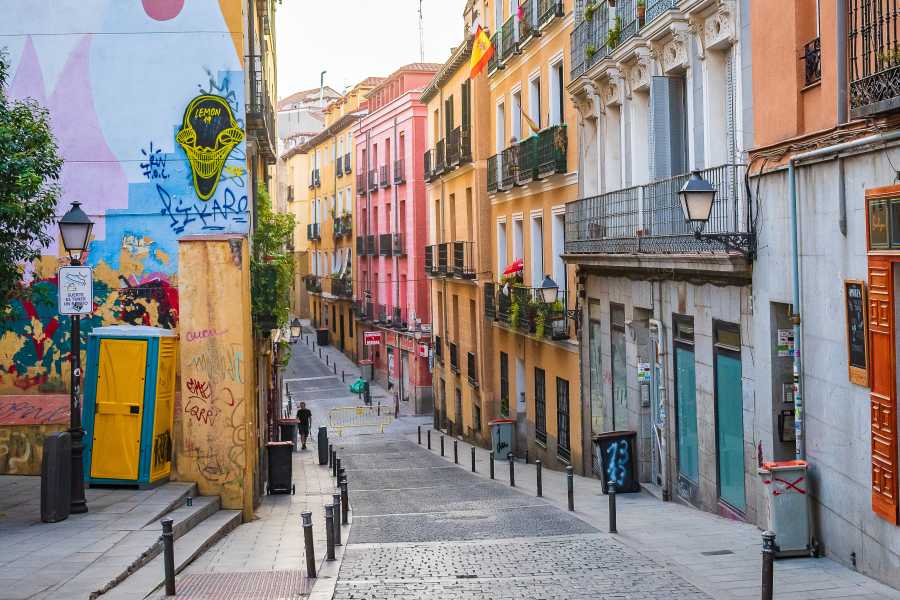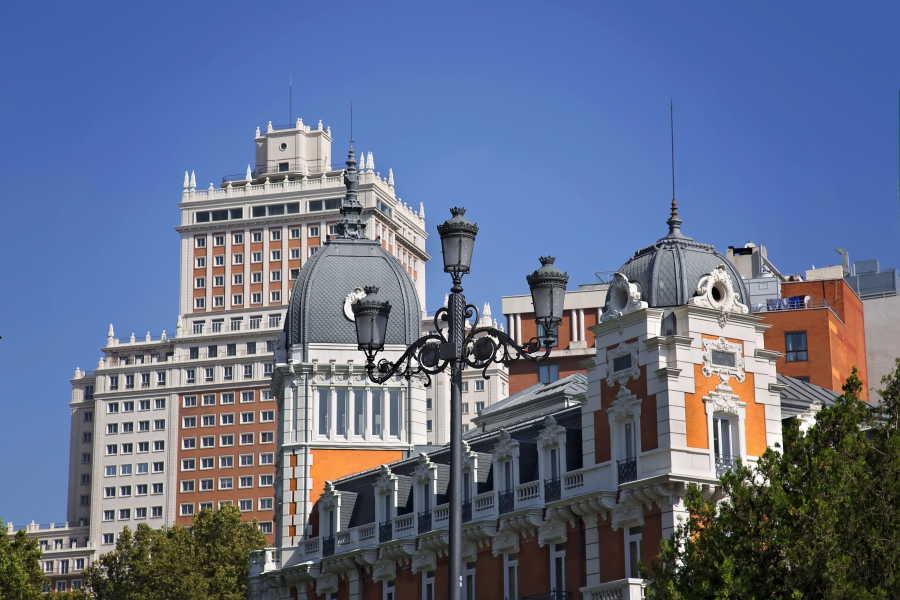
Malasaña
The Malasaña district stretches between the Chueca and Argüelles areas and administratively corresponds to the eastern part of the Universidad district. Its area is bordered by Gran Via, Calle de la Princesa, Calle de Fuencarral, Calle de Alberto Aguilera, Calle de Carranza and up to the area of Plaza Bilbao.
This is a lively area, also known as the neighbourhood of wonders (in Spanish Barrio Maravillas), owing this nickname to the ancient presence of plants that were considered marvellous. Instead, the name Barrio Malasaña goes back to Manuela Malasaña, a Madrilenian heroine who took part in the defence of what is now Plaza Dos de Mayo during the invasion of French troops.
Over time, the area was affected by a social and cultural revolution that flared up in Madrid during the 1980s. Since then, it has become an emerging area in terms of both nightlife and sustainable commerce.
Today, the district is known for its alternative soul, from rock, punk and ska music to independent bookshops and vintage shops. There are a large presence of students and young people and offers many opportunities for entertainment and nightlife.
The area is well served by public transport, especially the metro network, so the neighbourhood is easy to reach from wherever you are in the city, and vice versa
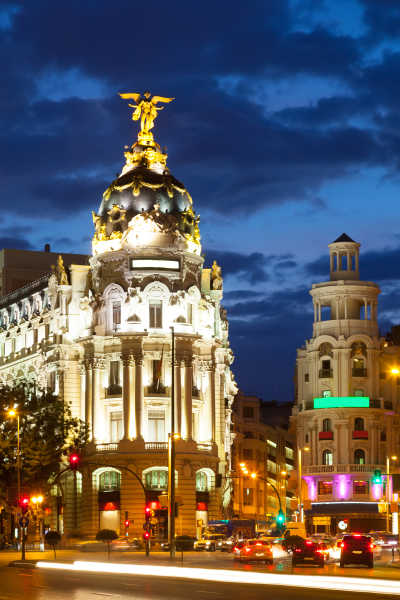
Apartments in Malasaña
What to see and do
Malasaña is a popular and popular district for locals but also much visited by tourists due to its many attractions.
The heart of the area is Plaza Dos de Mayo. It was here that the great confrontation took place during the uprising of 2 May 1808 between the Spanish and French troops of Napoleon. In the centre of the square stands the monument dedicated to Luis Daoiz and Pedro Velarde Santillan, the heroes who died defending the city.
Also worth visiting, but for more nightlife reasons, are Plaza de San Ildefonso and Calle del Pez, Calle del Espíritu Santo, and Calle de Manuela Malasaña, all full of clubs and restaurants.
The district is also a hub of culture and art. Strolling through the streets you will come across real open-air sculptures: Tras Julia, a bronze statue located in Calle del Pez and dedicated to a writer and activist from the 1800s; the Passante, at the entrance to the School of Fine Arts; the Young Woman Walking, in Plaza San Ildefonso; the Reader in Plaza Dos de Mayo. They are all an ode to gender equality and celebrate the right to education.
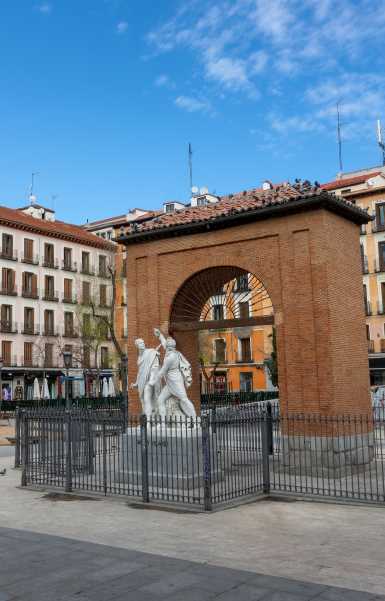
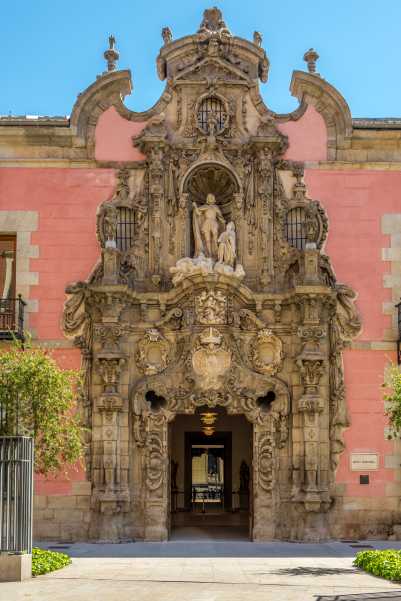
For art lovers, also worth a visit is the Museo de Historia de Madrid, which is located in a beautiful Baroque building and holds important collections showing the evolution of the city. If you like drawing, the ABC Museum is entirely dedicated to the graphic arts of illustration. Workshops, exhibitions, and numerous other activities are also organised.
Calle de la Princesa is home to one of Spain's most important private collections, housed in the Liria Palace, which is also worth a visit for its neoclassical architectural beauty.
There is no shortage of churches and religious landmarks that have left us important historical and artistic testimonies. The most spectacular building is undoubtedly the Church of San Antonio de los Alemanes, but the Church of Buena Dicha is also very significant. A few steps away from the latter is also the Church of San Martin, an excellent example of the Madrilenian Baroque style.
Last but not least, we kept the Cuartel del Conde Duque, a cultural centre where exhibitions, concerts and various kinds of events are organised and a main hub for contemporary art.
Where to eat and drink
Being the neighbourhood of the movida and with a really varied food and wine offer, it is difficult to say which are the best restaurants in Malasaña to stop at. Our advice is to try them all a little at a time!
There are several typical taverns with a traditionally relaxed and cosy atmosphere where you can have a cold beer to accompany the famous Spanish tapas. With this in mind, let's start by looking at a few tapas places that are worth mentioning: Tapería de Malasaña, an easy-going place perfect for meeting up with friends; Circo de las Tapas, great value for money, small but carefully curated menu; Bodega de la Ardosa, a historic place to try at least once; or Taberna Casa Camacho, a less touristy but authentic option.
There are a few venues in Malasaña that have even become real institutions, such as Via Lactea, an elegant lounge bar with a vintage feel and pool tables; El Penta, a pub on Calle de la Palma; Madrid me mata, an old-fashioned venue with 70s and 80s music.
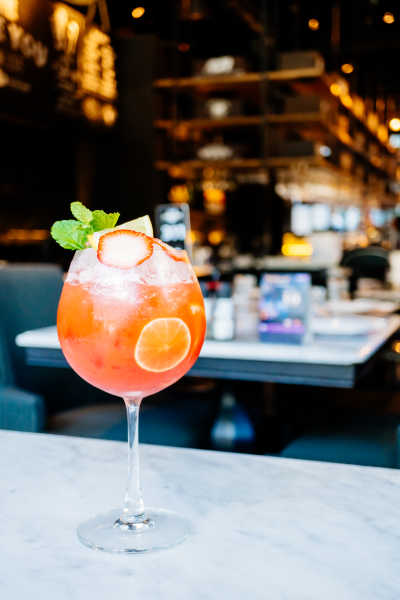

The other typical Spanish dish is paella and even in this district there is no shortage of restaurants where you can taste really good ones. Socarratt, an authentic preparation by Valencian owners who choose quality ingredients. La Paella Real, again the taste does not disappoint and neither do the jugs of sangria. La Paella de la Reina, variations with fish, chicken and rabbit in a vintage-style establishment.
Other options at any time of day are: the restaurant Ojalá, also offering cocktails and smoothies; La Colmada, half bar and half shop, the perfect place for an aperitif in Malasaña. But for this special moment, Madrid's terraces take centre stage and there are some great choices in this neighbourhood too: Azotea Forus Barceló, La Terraza del Santo Domingo, The Moon Terrace Cocktail Bar. You can choose from a wide range of both traditional and innovative products and even vegetarian or vegan recipes.
There are also plenty of venues for those who want to continue having fun after dinner, plenty offering indi or rock music, with interesting Spanish variations. Young people, however, also gather in parks and squares for the botellón ritual, which consists mainly of sitting in a circle, chatting and laughing together.
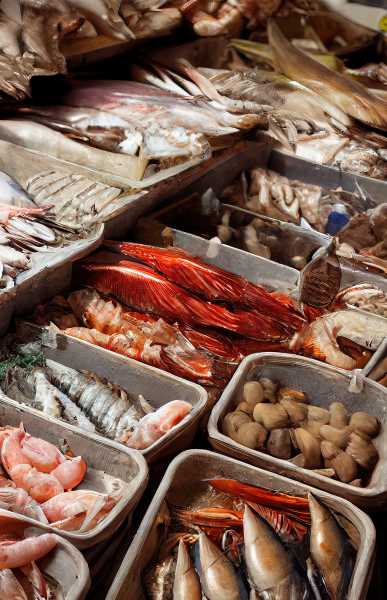
Where to go shopping
In Malasaña you will find several vintage shops, both for clothing, footwear and gifts, as well as second-hand items. It is the perfect neighbourhood if you like to do some alternative shopping, away from the classic brands, or go in search of original purchases in its independent bookshops.
It is also a district renowned for its markets and street markets, the main ones being: Malamarket, which takes place on Saturdays on Plaza Dos de Mayo; Adelita Market, there is once a month in Espíritu Santo, perfect for second-hand items; then again Market Vintage La Industria a second-hand clothes shop where you can find pretty good bargains.
In addition, landmarks for food shopping and more are: Mercado Barceló, a traditional municipal market run by an association of traders and bringing together various types of businesses. Here you can find a wide range of fresh and packaged gastronomic products. Or the Mercado San Antón, between floors dedicated to the sale of meat, fish, cold meats, cheeses, vegetables, gourmet products and where there are also kiosks, a terrace bar and cooking demonstrations.
Another much more modern and trendy market is Saint Ildephonsus Market, which is also indoors on three floors and there are several small interior bars serving international dishes as well as trendy cocktail bars.
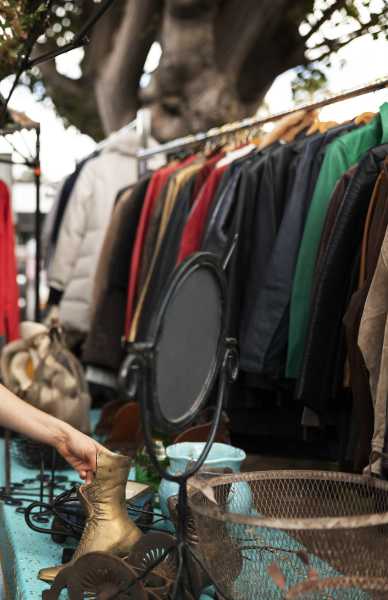
Some questions?
Have more questions?
